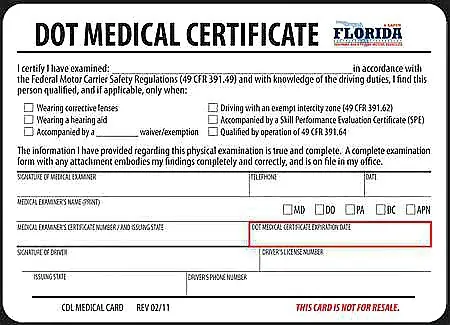No one said it would be easy to prepare for your CDL permit test. However, with the right study plan, focused strategies, and clear expectations about what will be covered, you can pass the CDL permit test the first time. From general knowledge to air brakes and combination vehicle requirements, this guide will walk you step by step through how to study for the CDL permit test on acquiring a CDL. Once obtained the CDL permit test successfully, you are closer to entering the world of commercial driving. Let’s now dive into everything you should know to ace your exam!
What to study for the CDL permit test?
The CDL permit test generally consists of three parts: general knowledge, air brake, and combination vehicle tests. All applicants must undertake the general knowledge test, which is a basic need for understanding the core commercial driving principles. In addition, you may have to take other tests depending on the class of CDL you will be obtaining and what type of vehicle you will drive: Air brakes test, if drivers want to drive air-brake vehicles and combination vehicles, test if individuals operate a combination of vehicles. Below is the breakdown of what you study for these tests.
General knowledge test
The general knowledge test is the most common test every applicant will take to get a CDL. It includes 50 multiple-choice questions to test your knowledge of safe driving practices, road rules, and vehicle safety. Drivers are required to answer at least 80% of the total questions (40 questions) correctly to pass the test.

The general knowledge test provides questions on a wide array of topics critical to safe and responsible commercial driving. Here are the major areas of that knowledge:
- Driving safety and best practices: Following safely, braking, and adjusting speeds to road and weather conditions.
- Traffic laws and regulations: Understanding and applying traffic signs and signals, right-of-way rules, and lane usage specific to commercial vehicles.
- Vehicle inspection and maintenance: Pre-trip inspection requirements, identification, and reporting of defects in vehicles, and routine maintenance.
- Accident and emergency procedures: Accident prevention measures, emergency actions, and hazardous road conditions.
- Basic vehicle control: Lane management, turning the vehicle with large-sized loads, safe backing, and the use of blind spots.
- Cargo handling: Cargo loading and securing, weight limits, and balancing cargo for maintaining vehicle stability.
- Driver fatigue and health: Recognizing and managing driver fatigue, effects of substances on driving, and understanding regulations related to driver hours and rest.
The skills and knowledge gained in these areas help as a whole to ensure that a driver is adequately prepared to deal with not only day-to-day driving conditions safely but also unforeseen situations.
Take the General Knowledge practice test now!
Air brakes test
The CDL air brakes test is important because it ascertains whether or not you know how air brakes work, the parts that make up the air braking system, and the checks that you must perform for the systems to work right. All of these will be covered in 25 multiple choice questions in general and 20 questions correct is the passing condition.

The key areas you should focus on are as follows:
- Parts of an air brake system: It looks in depth at air compressor, storage tanks, brake valves, and the brake chambers that are the key components comprising an air brake system. Understanding how these parts work together is crucial for safe vehicle operation and maintenance.
- Dual air brake: This section will explain in detail what dual air brake systems are, how they operate and enhance safety by having one system as a backup in case of the failure of the other. You’ll learn about the configuration and advantages of dual systems in how they operate to provide reliable braking performance.
- Inspecting air brake systems: The basic procedures for conducting a thorough inspection of air brake systems are to check leaks and pressure levels, as well as the functionality of all components at each use before every trip. This section puts weight on regular inspections to keep up with safety.
- Using air brakes: Methods of effective application and release while driving; this would involve the application of the parking brake. The need for progressive application to avoid skidding would be highlighted. You will learn how to handle your brakes in various conditions to ensure the most efficient performance:.
By studying the above subjects, you will be able to put yourself in a better position in preparation for the air brake test and comfortably operate such vehicles with air brake systems safely and effectively.
Take the Air Brakes practice test now!
Combination vehicles test
The CDL combination vehicles test is important for those who want to drive tractor-trailers and other combination vehicles. There are typically 20 multiple-choice questions and a passing score is 80% correctness or more. It will test your knowledge of the particular dynamics involved and safety considerations that surround having a vehicle with sections. Key topics covered include:
- Driving combination vehicles safely: Techniques for handling unique operational, turning and maneuvering problems encountered by combination vehicles. Also covers following distances and how to prevent rollovers.
- Combination vehicle air brakes: This section describes the particular use and maintenance for air brakes on combination vehicles, including brake lag and how to handle the braking force.
- Anti-lock brake systems: The functionality of anti-lock braking systems in avoiding the locking of wheels, maintenance of control at sudden stops, and troubleshooting for ABS warnings.
- Coupling and uncoupling: Safe and proper methods for coupling and uncoupling trailers, including connecting the proper connections in the right order, securing the fifth wheel, and for preventing the trailer from moving.
- Inspecting a combination vehicle: Key inspection items, such as the fifth wheel, trailer hitch, airlines, and their connection points, to ensure all segments are properly secured and safe for operation.
Each of these areas is important and critical for dealing with the additional weight, length, and pivot points you must be concerned with when operating a combination vehicle in a safe manner.
Take the Combination Vehicles practice test now!
How to study for the CDL permit test?
The presence of a study plan helps an individual stay organized and build some confidence. Here are effective strategies for getting ready for the test.

Understand the test format and requirements
Before you start actually studying, it is beneficial to learn about the general knowledge about the CDL permit test. This includes knowing how many questions are on the test, generally the subjects that will be covered, and the minimum passing score necessary for your state. By knowing what to expect a great deal of anxiety can be avoided on test day and allow you to better target your studying on the most important areas.
Develop a comprehensive study plan
It is built on a structured study plan and suits your learning style. First, get yourself a current CDL manual, as this will form the basis of all your studying. Next, create a schedule to study, breaking the material up into manageable sections and allowing for periodic review of covered material. Set specific goals for your study session to help you keep track of where you are and what you need to continue working on as you prepare.
Utilize practice tests
One of the most effective ways to reinforce a concept and self-test is to incorporate practice tests into your study routine. Take a diagnostic practice test early on to help identify areas of strength and weakness. You can then use this information to focus your study efforts where they are needed most. These tests familiarize you with the format and the type of questions you may expect to find on the actual test, so that you may be more apt to use your time wisely and not be anxious. In such a way, by regularly testing your knowledge with practice tests, you will be well prepared to ace the CDL permit test.
Advice for studying for the CDL permit test
Preparing for the CDL permit test requires organization and smart study habits. Here are the key strategies to help:
Don’t wait till the last minute
Don’t do last-minute studying; instead, make a schedule. Take the contents of each section in the CDL permit test and study them a little at a time over several weeks. This will give you time to absorb what you are reading which will allow you to retain the information better and approach the test with confidence.
Learn from mistake
Practice tests will let you know which areas to improve on. Any questions missed should be reviewed to understand why the mistake was made. Common errors should be logged in a journal and those topics revisited. Learning from mistakes will solidify your knowledge and prevent you from repeating those same errors on test day.
Avoid distractions
Find a comfortable, quiet study space and prevent distractions from occurring. Turn the phone off; block out distractions; and set precise goals for each study session. Staying focused helps you absorb information more effectively; which makes your study time more productive.
FAQs
1. How hard is the permit test?
The CDL permit test is difficult to vary from person to person but mostly for an individual who does not know most of the commercial driving regulations. However, it becomes easier once you have prepared well.
2. What’s the best way to study for the CDL permit test?
The most effective methods of studying include breaking up material into manageable sections, utilizing multiple study resources, and regularly taking practice tests.
3. How many questions are there on the CDL permit test?
There are generally 50 multiple choice questions on the general knowledge test, 25 multiple choice questions on air brakes test and 20 multiple choice questions on combination vehicles test. In total, you are required to answer about 95 questions.
Final thoughts
Preparation for how to study for the CDL permit test is stern and requires tactical planning. However, with the right approach, you can definitely pass an examination on the first attempt. Focus your efforts on key areas, take practice tests, and follow study advice so you will be prepared on test day. Good luck, in this very essential stride into your rewarding career as a commercial driver!



